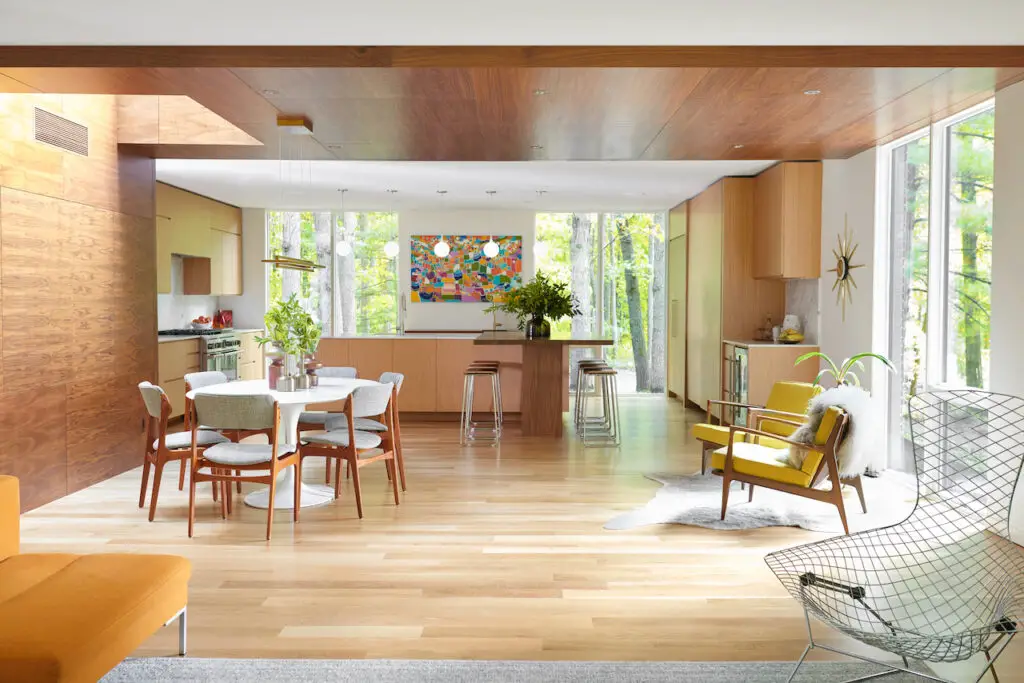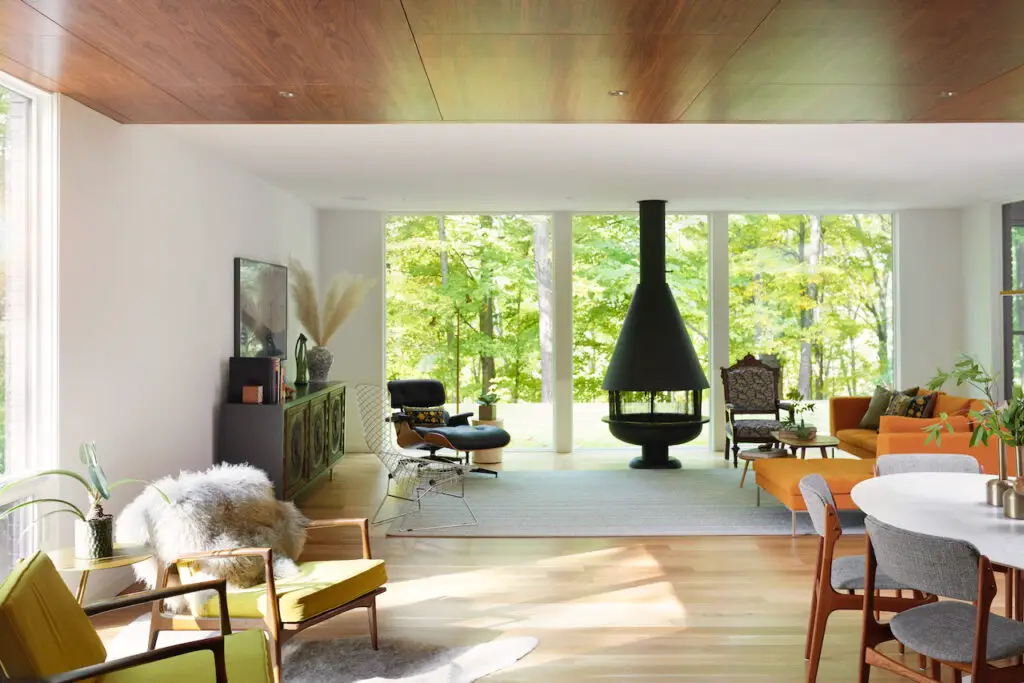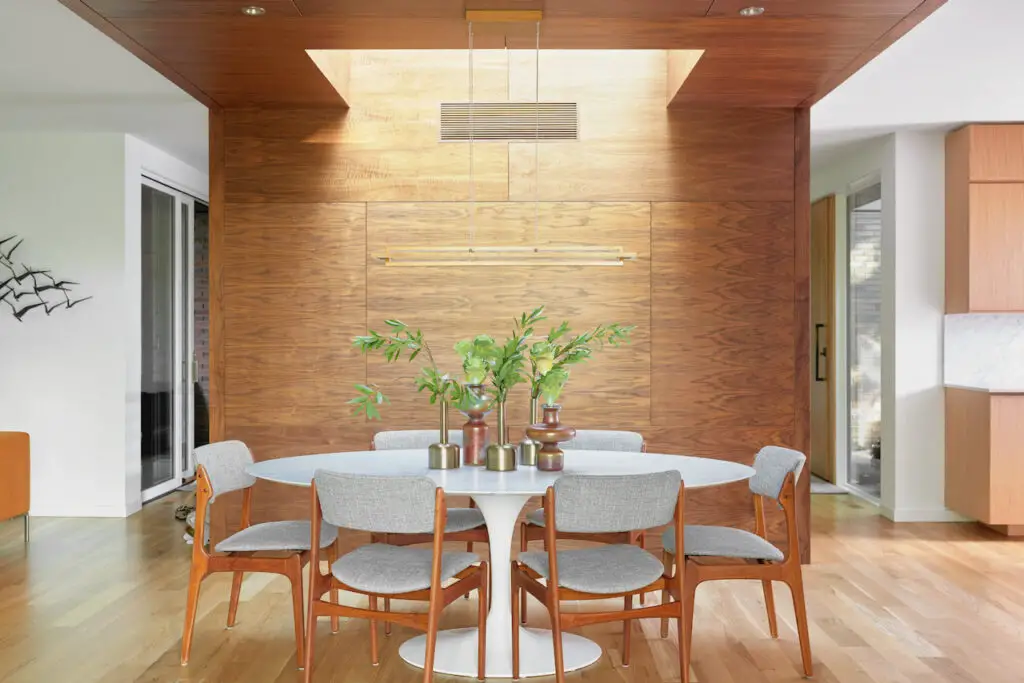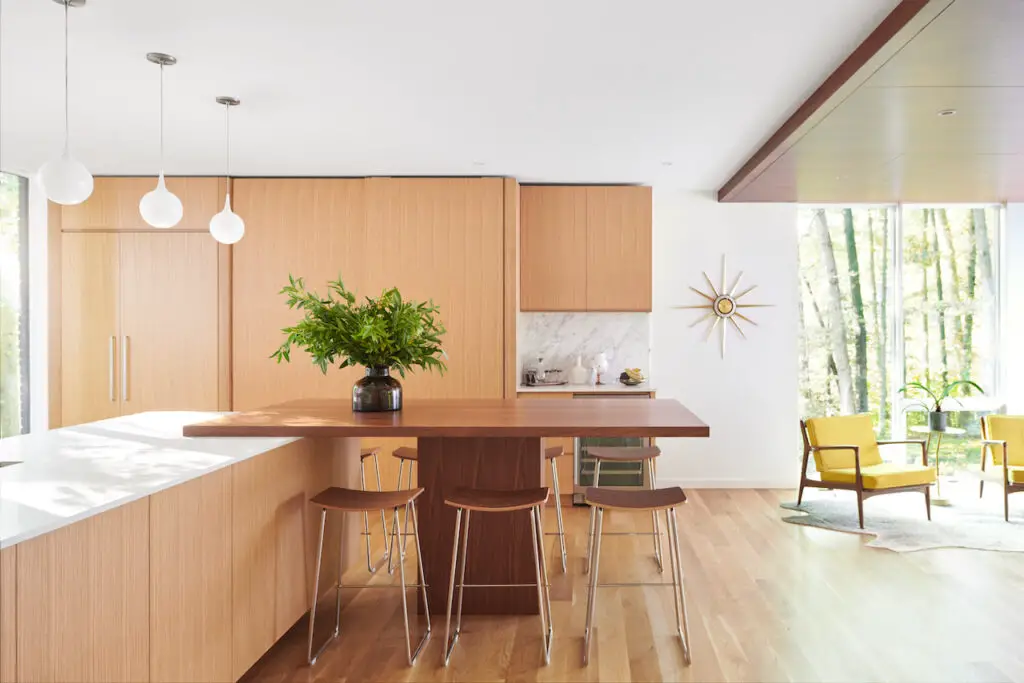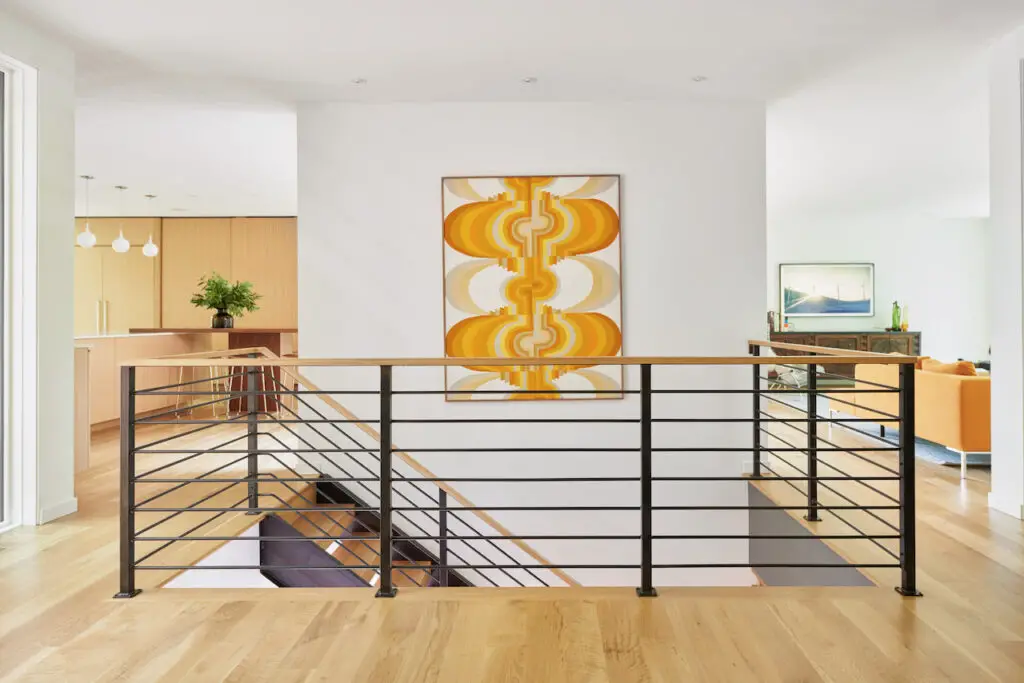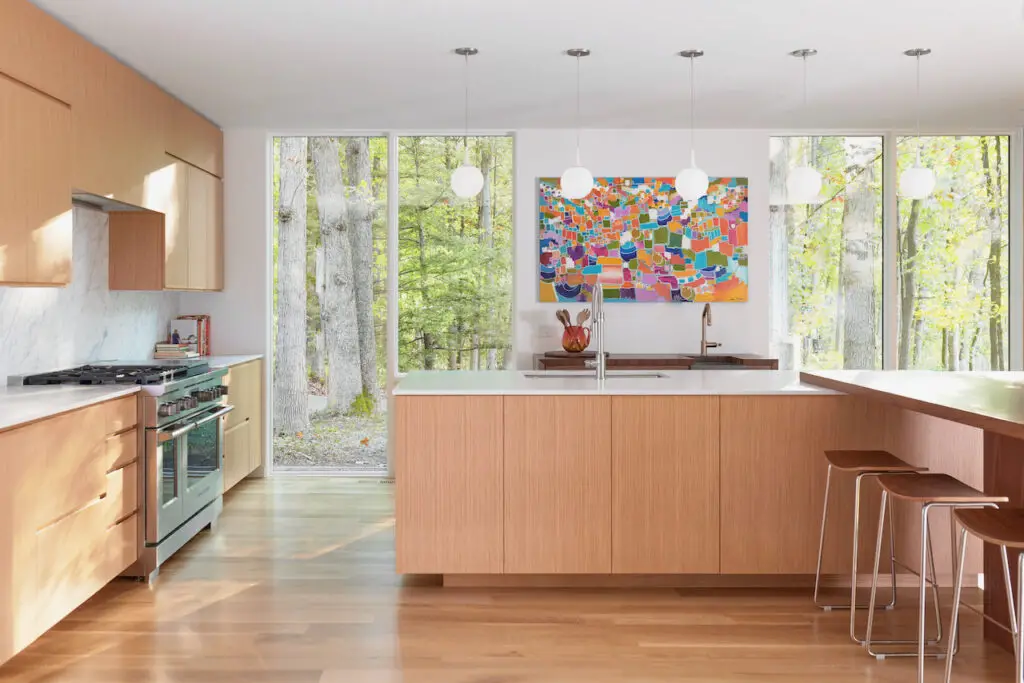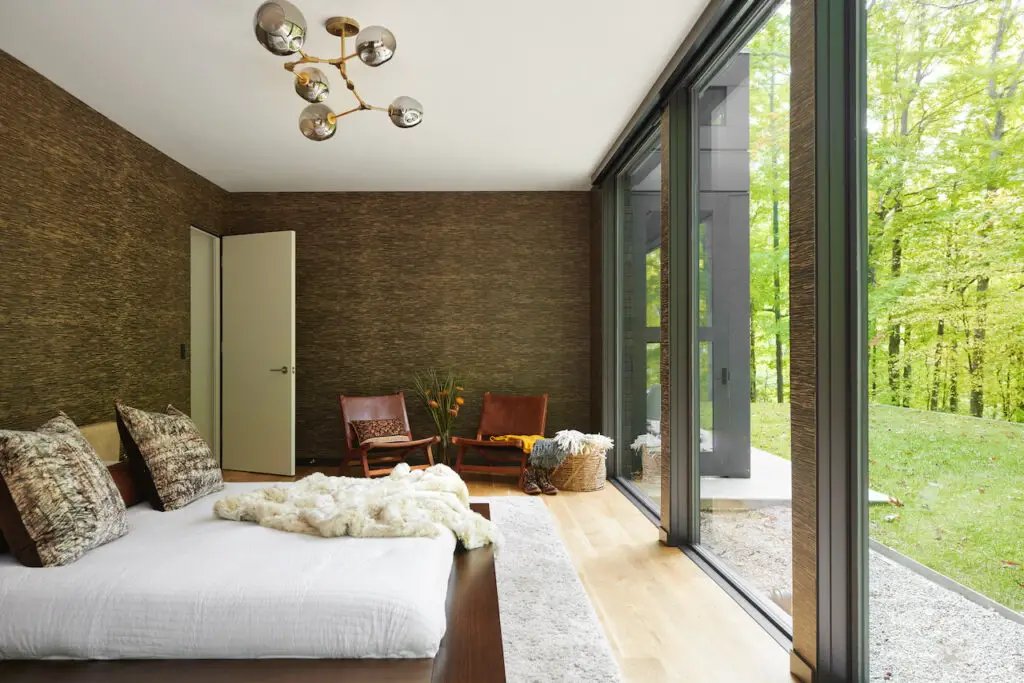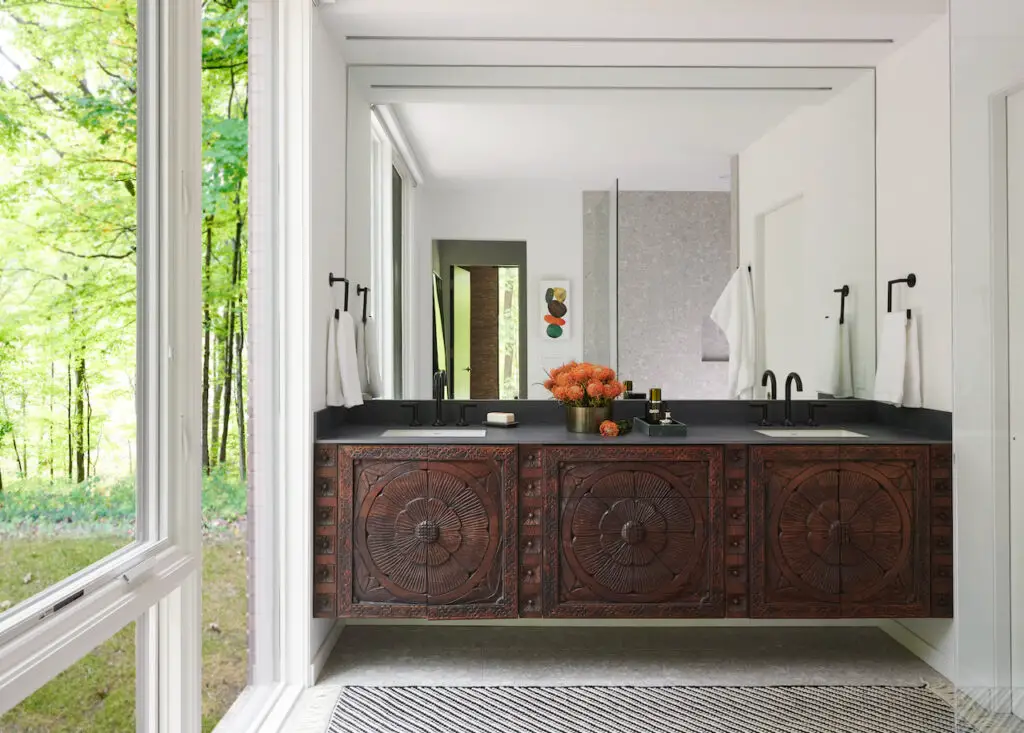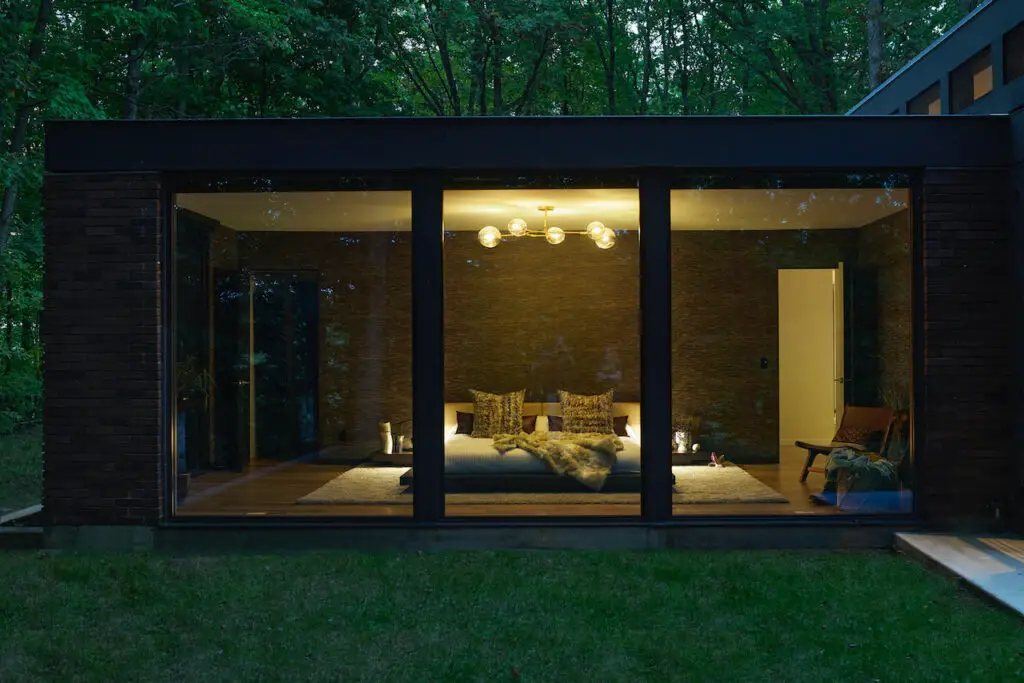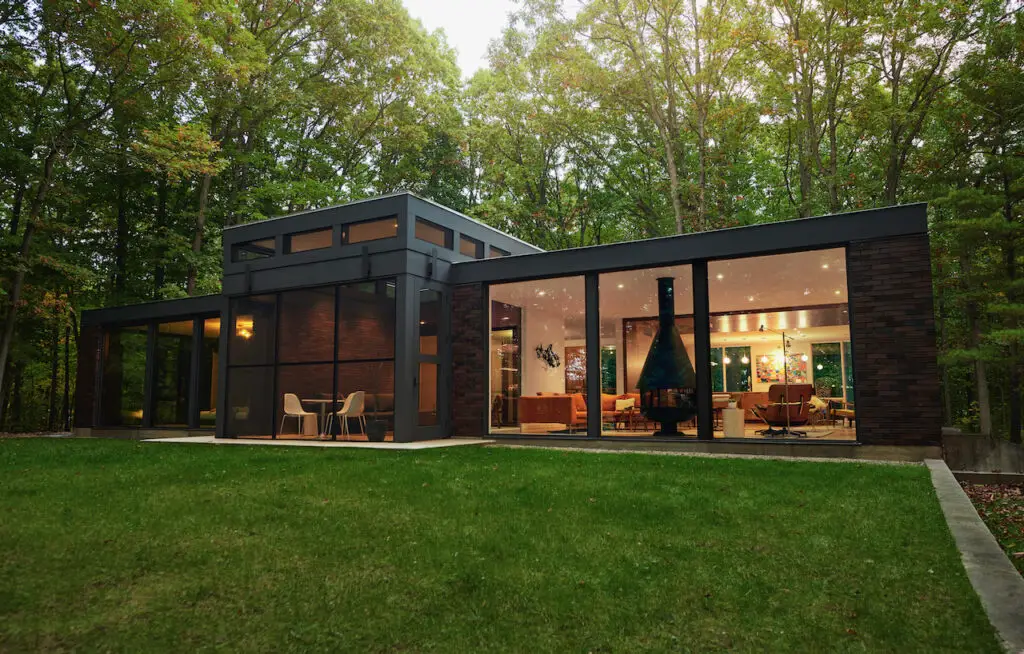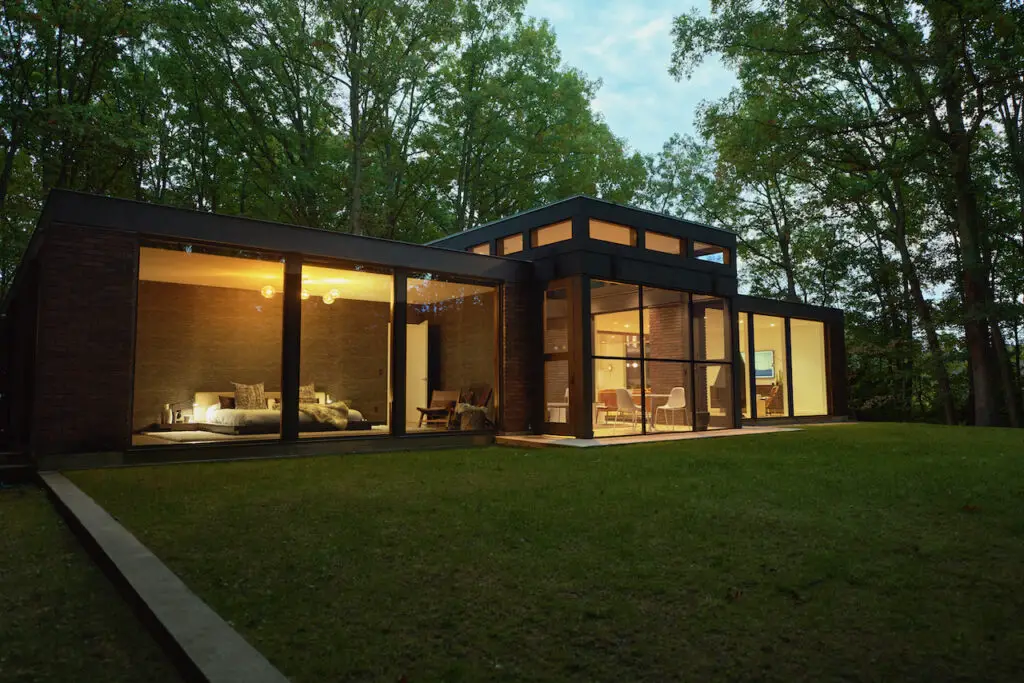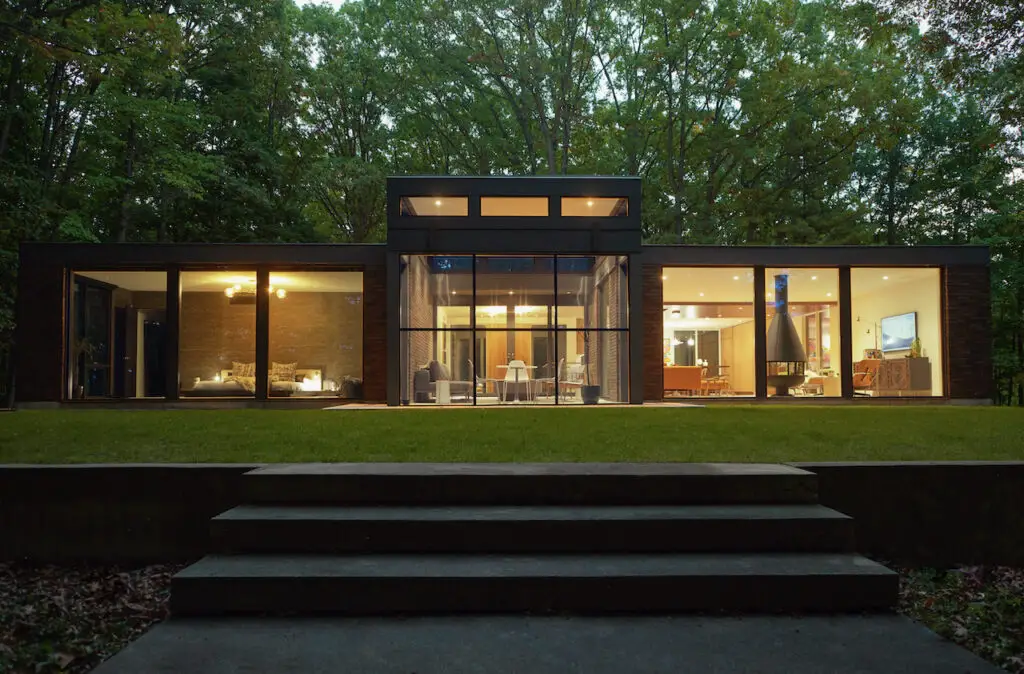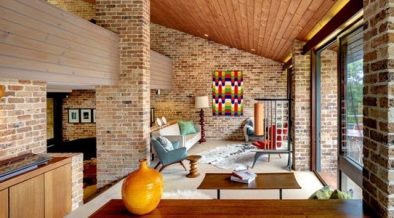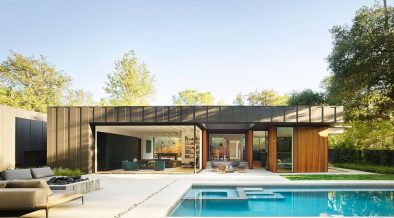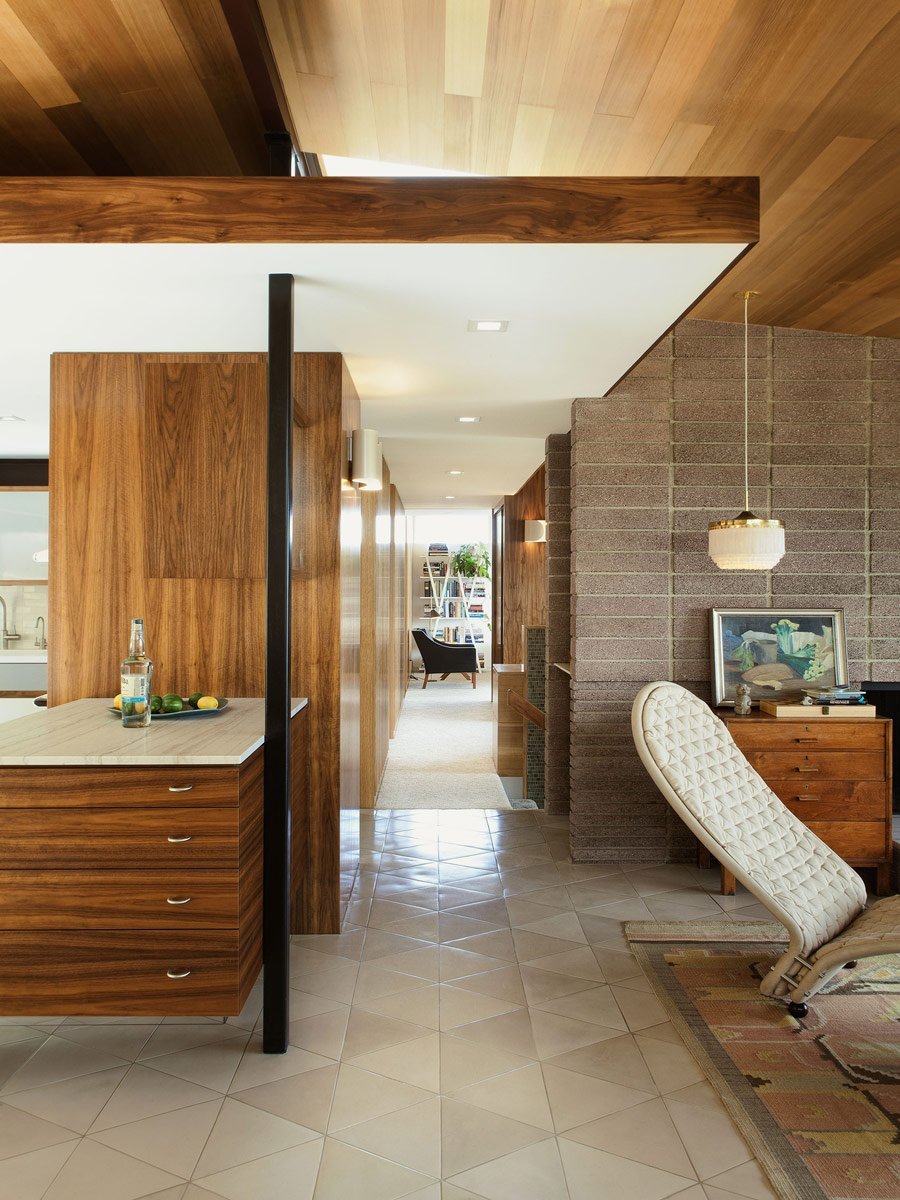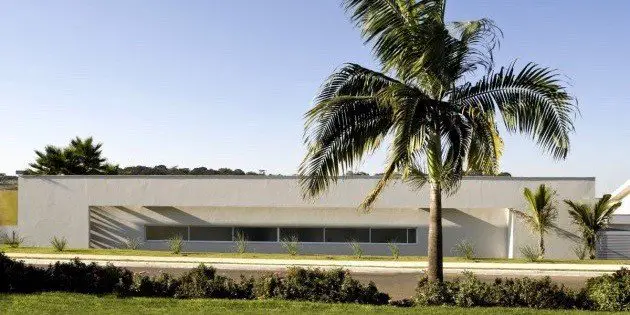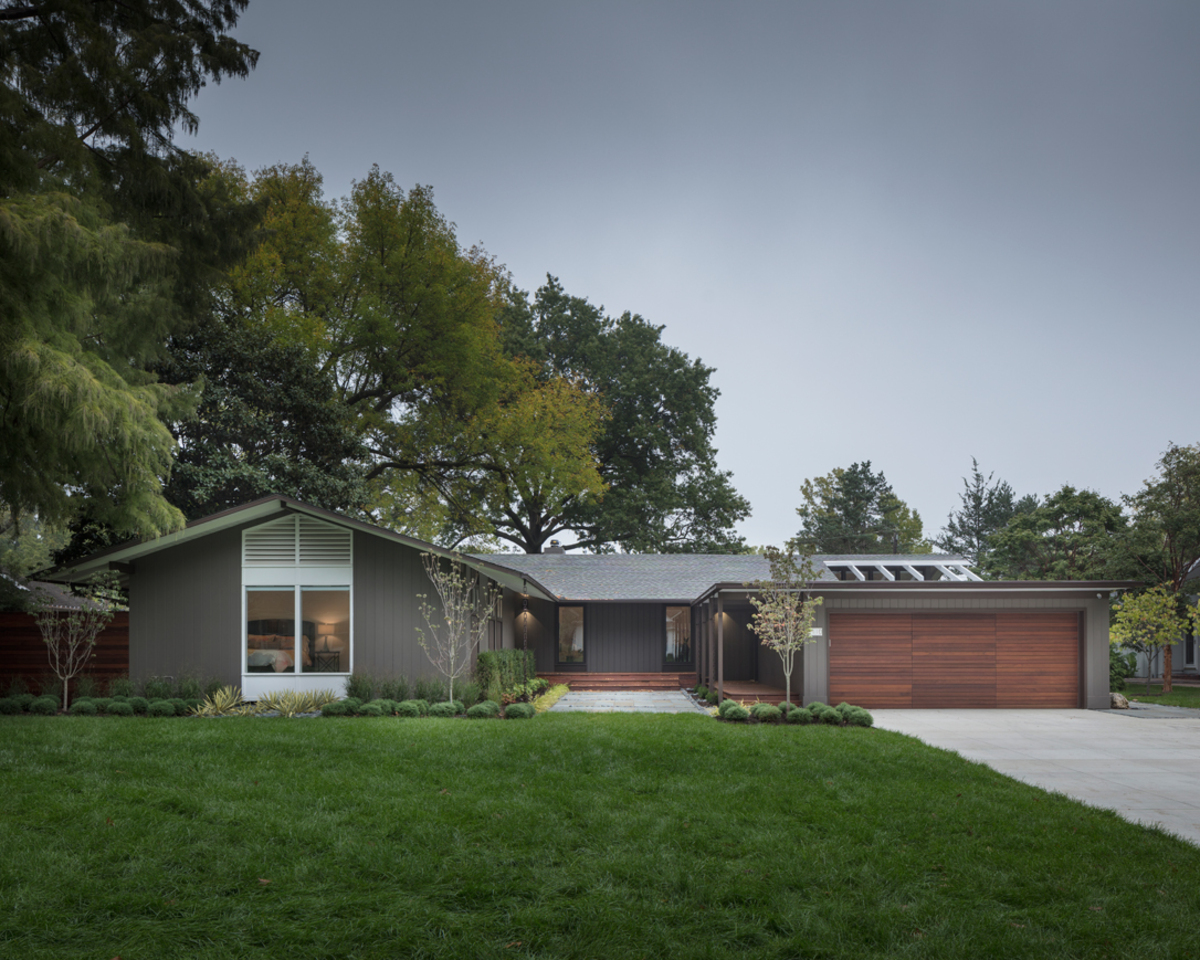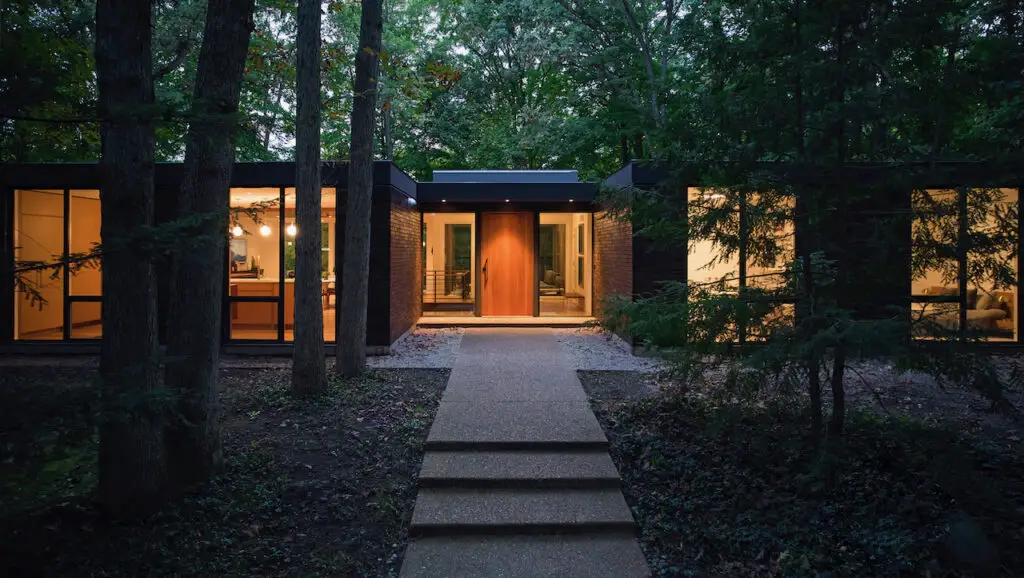
This remarkable mid-century residence was designed by architect Otto Stark, noted for Chicago’s lauded BlueCross BlueShield Building (1968) at 55 W. Wacker Drive. New Urban Home Builders and Deidre Interiors were brought in to renovate the home while adhering as closely as possible to the original footprint. We chatted with them to find out more about the renovation and what inspires their work.
What was the house like previously and what challenges have you faced?
On the bright side, when our clients purchased the home, it still looked much like it probably did when it was built. Unfortunately, it was also badly in need of mechanical updates and better energy efficiency.
Unfortunately, the home was badly in need of mechanical updates and better energy efficiency. Just as importantly, the floor plans needed to be reconfigured to accommodate the modern lifestyles of its new owners.
The original kitchen, for example, was walled off and toward the back of the home – we moved it up front, opened the floor plan, and added a living room overlooking the woods and pond at the back to better accentuate the view.
To create a roomy master suite, we combined two existing bedrooms with a full bath on the main level. We then created a new bedroom out of storage space on the lower level to preserve the home’s original bedroom count (four).
What do you know about the architect who designed the house?
Outside of his own home, architect Otto Stark’s ‘Brosema House’ (1967) was the only private residence he ever designed and saw built. It was constructed in Grand Rapids, Michigan one year before Stark’s iconic “Blue Cross-Blue Shield Building” (1968) would be completed at 55 W. Wacker Drive in downtown Chicago.
Like Stark’s commercial buildings, the Brosema House reflected a brutalist aesthetic in its symmetry and austerity. Given the home’s historical significance, a primary goal of this renovation was to adhere as closely as possible to Stark’s architectural vision.
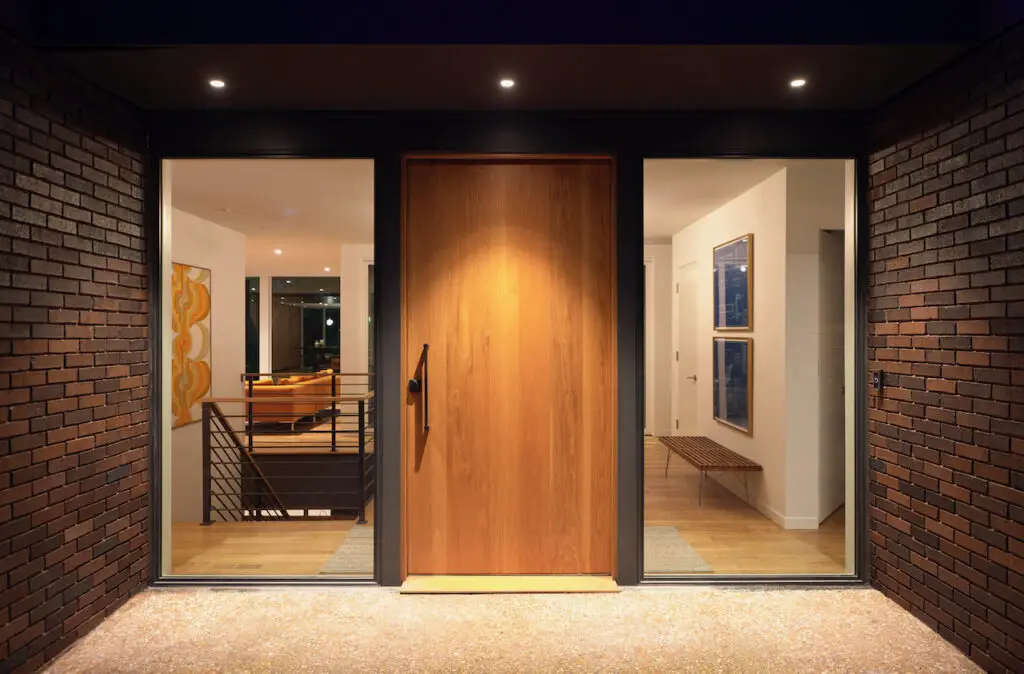
What midcentury influences did you want to include?
We made much use of (and were lucky to have) the home’s original architectural plans, as well as historic photos of the home, and we let them guide us.
For example, Stark drew two possible staircases for the entry; the circular one that was eventually built didn’t work for our clients, so we designed a new, L-shaped staircase based on the other sketch.
The gorgeous, hand-carved entry doors that Stark acquired from Spain specifically for this house were too worn to be functional anymore, so we repurposed them as custom living room and master bath cabinets.
What do you think was so special about the midcentury period in American architecture and design?
Midcentury architecture broke from earlier forms in its emphasis on connecting homes and their environments, particularly through glass – new building technologies of the time allowed for more windows than ever before.
Midcentury homes were more utilitarian, devoid of ‘noise,’ missing a lot of ornamentation that served no functional purpose. They were much more organic in look and feel.
Last but note least, what in your opinion are the best features of this home?
We love the new screened porch – it was added at the rear of the home and doesn’t protrude from the structure’s original envelope. It’s a calm, relaxing space in which to appreciate the surrounding woods.
We also added oversized windows around much of the home and they let in plentiful natural light and again permit lovely views.
Lastly, opening up the floor plan made the home feel bigger, less claustrophobic, and increased its suitability for hosting gatherings.
